Why the CEO has to be the chief blogger

Successful social media strategy starts at the top of every business
It's misguided to think social media can simply be delegated to the youngest in the business, or outsourced to a digital agency. Social media is simply another relationship management channel. So it makes sense the strategy of what will be discussed in social media and what won't lies with the CEO. Social media is the one place the CEO's message can get through direct to the individual, without being filtered.
So if you're the CEO, consider this medium as your direct way to have a personal conversation where you can champion what you believe in. Before you begin, reconsider what you want your business to be known for. Ask yourself what is at the heart of why people should buy from your business, rather than your competitors?
Recent research by PR firm Weber Shandwick shows social media has positive impacts on business. (Click to enlarge.)
This simple checklist will help frame the social media agenda for your business
- What is the purpose of the business, what will success look like?
- What is the business strategy?
- What does the business believe in?
- How does it add value?
- What are its beliefs and ethics, its reason for being, its mojo?
- What is the business story? The way you express your differentiation, the reason for customers to choose you.
- Who does the business want to help? Who do you want to leave for your competitors to lose time or money trying to please?
- Who does the business want to influence? The gatekeepers to your prospects, or perhaps the well connected people who might bad mouth you through ignorance?
- Who does the business want to work with? Do you have affinity partners or associations you can share your blogs with?
- What kind of people does the business want to attract? It now matters what you look like in the blogoshere because it's the first place most potential employees will check you out.
Reputation risk has been elevated by social media
As equally important as having a social media presence is what you say. Being active across social media brings new risks. What is published online stays online, potentially forever. No wonder reputation risk is now the number one concern of CEOs globally according to the latest report from Deloitte.
Perhaps if more CEOs took control they would minimise the risk of staff who know less being the main originators of social media conversations. The CEO is best placed to set the agenda, staff can then follow through.
According to research by Weber Shandwick, more than six in 10 CEOs are already posting content on company websites. Yet only 18 per cent of the CEOs surveyed participated on social networks. The chart above gives an overview of the survey findings. Interstingly, 80% of staff want to see their CEOs on social media, largely because it's where they want to keep up to date.
I feel most CEOs I talk to are missing this powerful opportunity to spread the truth about their business vision. Social media is where these truths are shared and discussed, it's one place the leader can champion their cause with passion.
Read MoreWhat makes mid-sized businesses more profitable than big?
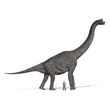
So what is a mid-sized business?
GE Capital has been defining the mid market in Australia as businesses that have annual revenues of between A$10 million and A$250 million. Average firm turnover is about A$41 million. Despite comprising just 1.4% of companies by number, mid-market firms provide one in four full-time jobs and contribute A$425 billion annually to the economy.
The federal Department of Innovation, Industry, Science and Research, which has a broader definition of medium-sized businesses as those with between 20 and 199 employees, puts the economic contribution of the mid-market considerably higher.
The mid-market campaign we successfully managed over four years for IBM targeted businesses from 99 and right up to 999, the large corporate and government sectors that IBM traditionally owned really kick in around 1,000 staff.
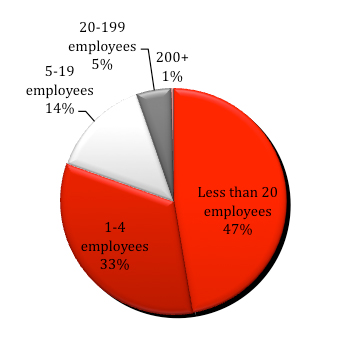
Australian Business
Most mangers still hold the belief big means better. We hold a belief businesses can only succeed today by being nimble. The reason for this is the profound change the Internet has brought to our lives. The world even quite recently was quite slow to change, and most businesses were relatively simple. Today we all compete in a world of rapid paced change and increasing complexity. So the old big business model of slowly and effectively finding savings from gradual improvements to products and services and small efficiency gains in management and procurement are no longer enough to stay competitive. Let alone stay in business.
The evidence for the decline in profitability of big business is seen in this chart. It shows one third of market leaders in their category in 1950 were also the most profitable businesses in their category, whereas today being big almost guarantees you’ll be struggling to make a buck.
Market leaders that are also category profit leaders:
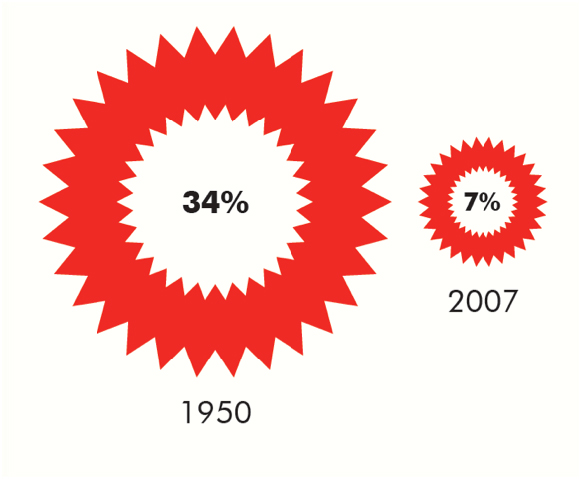
What makes big business vulnerable to challenger brands
George Shinkle is a Lecturer in the School of Strategy and Entrepreneurship at the Australian School of Business. He has been studying why big business is failing.
“Organisations grow large by becoming more efficient, so when you’re really focusing on efficiency you typically become less and less flexible. The rules and processes and procedures become more and more about keeping you efficient, constraining your ability to be flexible,” he says.
“If you talk to the CEO of a very large firm, they don’t feel as if they’ve got direct control of what the organisation’s really doing. They give guidance and they set policy but the organisation has some variance on how well they follow those things,” says Shinkle.
The learning you can take advantage of is that managers in large companies try to hide from change. Which is why, if you’re running a mid-market business, you will create your own advantage by actively seeking out things to change to differentiate from the competition.
Not too big, not too small, mid-sized business is just right
Big business is still obsessed with conformity, groupthink and doing things the way they have always been done around here. Small businesses may be the birthplace of great ideas, but they usually don’t have the scale or resources to commercialise those insights.
The mid-sized business is perfectly placed in the middle, where the distance between innovative thinkers and management that can actually make decisions is short. Unlike small business, resources aren’t so slim ideas can’t be trialled without damaging the existing business of running the business.
At a CEO Institute meeting Susan Lenehan told me the biggest frustration of the CEOs of Australian arms of global businesses she mentors is their total lack of autonomy. They are prescribed what to do by head office irrespective of local circumstances. In her words, it’s the pinnacle of the “bully culture” of big business management.
Challenger brands will prosper by taking risks
This is the great opportunity mid-sized Australian businesses are exploiting, they can leverage their ability to try changes, while the big guys are stuck in the inertia of business as usual, with its five year plans, annual targets and quarterly reporting. By challenging traditional big brands, Australians can be globally competitive in a world that is changing daily.
The real successes come from maximising returns by minimising the risks of change – we developed the challenger brand formula for growth for this very reason.
Why you need brand awareness before sales
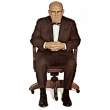
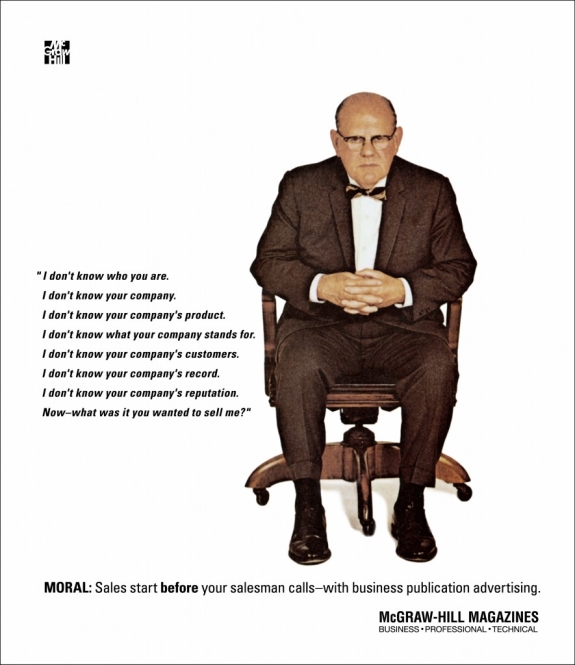
This famous ad for advertising with McGraw Hill appeared in 1958
Business owners sometimes need reminding of the timeless challenge, why would a prospect buy from you rather than one of your competitors?
For 50 years the simple answer was to spend more on advertising than the rest of your category. As marketers now realise, simple strategies in this Internet enabled world now require more complex solutions.
Challenger brands can succeed today without big ad budgets
The good news is smaller businesses can now be successful challenger brands with smaller budgets than the big brands. The staring point is to differentiate. with a singleminded story that prospects will value. you can then apply a test and learn approach to marketing across multiple mediums. Smarter strategies applied with insight will now succeed while big spending inflexible brands continue to struggle.
Read More73% of marketers say more has changed in 2 years than the past 50


Who are you going to call to advise your business on how to grasp the rapidly expanding number of marketing communications options? Usually you’d call in an expert. However, the pace of change right across the business world and the complexity of competing solutions is so great how can any individual be an expert? And big businesses may have lots of individuals, but we all know they rarely work as a team let alone communicate well with clients.
Marketing professionals are confused
A survey* by Adobe of 1000 marketers in the US shows the crisis in confidence of the marketing services.
“Marketers are facing a dilemma: they aren’t sure what’s working, they’re feeling under-equipped to meet the challenges of digital, and they’re having a tough time keeping up with the pace of change in the industry. What’s worse, no one hands you a playbook on how to make it all work,” says Ann Lewnes, Chief Marketing Officer, Adobe.
Digital marketing is full of novices
Adobe’s survey found less than half (48%) of marketers who consider themselves primarily digital specialists feel highly proficient in digital marketing. Most digital marketers haven’t had any formal training in digital marketing. No surprise really, it’s so new and evolving very few places can teach it.
The problem for business owners is how to leverage what’s new when so few people, if indeed any, know what will work. The people whose job it is to know, professional marketers, revealed in the survey the same old issues are today’s top challenges. 82% cited reaching their customers as the biggest challenge, then the uncertainty of knowing if their campaigns are working (79%), and measuring campaign effectiveness (77%) and marketing ROI (75%).
The answer for marketing your business?
Today every part of the business has to take risks
Whether it’s your accounting systems, distribution, IT or marketing, everything now is facing change. It’s hard enough to know the right question to ask anymore, let alone have the right answer. The safest option today is counterintuitive – it’s to realise you can’t predict winners anymore.
So the safe approach with marketing is no longer to set and forget. Rather than taking a long time and spending a lot of money attempting to develop the one perfect solution, try a lot ideas and mediums. And try them quickly and often.
Test. Learn. Adjust. Test again.
Learn to feel comfortable with failures. Set out to make the risks small so the stakes aren’t too high. Then go for it with a test and learn approach to marketing. The more often you fail the quicker you’ll find yourself challenging the competition and being successful.
* Source: Adobe and Edelman Berland, online survey among a total of 1000 US marketers. Marketing Staff (n=499), Marketing Decision Makers (n=436), Digital Marketers (n=263), and Marketing Generalists (n=754). September 2013
Read MoreAre fashion retailers training customers to buy on sale?
I've written in the past how Zara led the world by applying just-in-time manufacturing and data analytics to bring us fashion forward product design. This has given them an advantage over traditional retailers by circumventing the traditional seasonal approach to fashion.
Instead of waiting for the leading designers to reveal on the Paris catwalks what we'll be wearing next year, Zara's innovation was to take the Dell Computer model. Zara replenishes stock in their stores every week, see what sells, then make more of what is popular. Rather than sitting on large quantities of stock hoping people will like what style you've backed, Zara take a test and learn approach. They never back one colour or style for a full season, Zara simply adjusts what they manufacture on the fly to what the consumer wants this week.
Fashion challenger brands risk destroying the advantage they have created
Retailers are losing the power to maintain margins by encouraging a buy on sale mentality. According to Robin Givhan, the only clothes critic to win a Pulitzer Prize, with the constant turnover and turnout of items due to the ever-quickening fashion cycle, there’s no need to buy anything at full price anymore.
While bloggers and fashion critics have used social media to drive awareness and demand of the weekly fashion cycle, retailers she says are to blame for the loss of their pricing power.
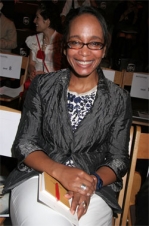
"Retailers talk a lot about how the availability of show images pique the interest of consumers before the clothes are available. But I blame retailers for creating a system in which they want spring clothes in November and more shipments every five second[s] and then putting things on sale when they've only been on the racks for one second," said Givhan.
Consumers usually don't know how to establish the value of something, it's actually within the power of the seller to frame the price that they will believe is fair.
Innovate for pricing advantage
If you have innovated your way to a price advantage, don't throw away your smartly won margin. Instead, decide how you can frame the price as fair value, for instance in terms of more for the same, or faster for the same, or better for the same. Offering something for less is an approach fashion retailers are finding comes at the cost of not just profit, but long term survival.
Don't drive your category to the bottom the way Persian Rug stores have, where in every corner of the world the SALE sign on the window now means OPEN. Here's one I snapped in Hong Kong...
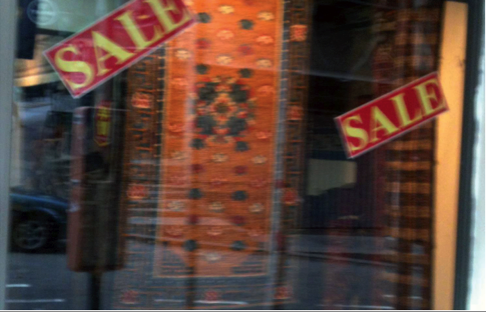
Do you have a clear point of difference to drive growth?


Staying in business has never been harder. 10,632 companies collapsed in the 12 months to March 1 2013 - ASIC also reports the number of firms being placed in administration is more than 12 per cent higher than during the GFC. Over the last few months an average of 44 small businesses were closing every day according to ABS data.
A change of government won’t change the fact the pace of change is still accelerating, the choices for customers continue growing and the decisions we all face in life are more complex than ever.
Where will your business growth come from?
These are your options:
- From existing clients
- By getting new clients
- Expanding to new locations, (interstate, overseas)
- Developing new services
- Making acquisitions
90% of businesses focus on number 1, selling more to current customers or charging them more. Yet the upside is limited.
Of the small number that go down the acquisition path most are disappointed. An AGSM survey of mergers and acquisitions showed after 3 years just 10% exceeded expectations of synergy and only 10% - 15% met expectations. The rest had failed or were in a death spiral.
Expansion and new product or service development often require a large commitment of resources and takes attention away from the existing business.
Which leaves new business as the key driver of growth. Marketing is the one proven method that can drive scalable new business growth. A successful new business program begins by confirming you have a differentiated offer relevant to today’s customer. Every prospective customer has more than one choice. What does your business have that makes it so special they have to choose you?
Customer alignment, simplification and innovation
Here’s a simple technique that GE Capital employs to keep their business differentiated in this time of rapid change. 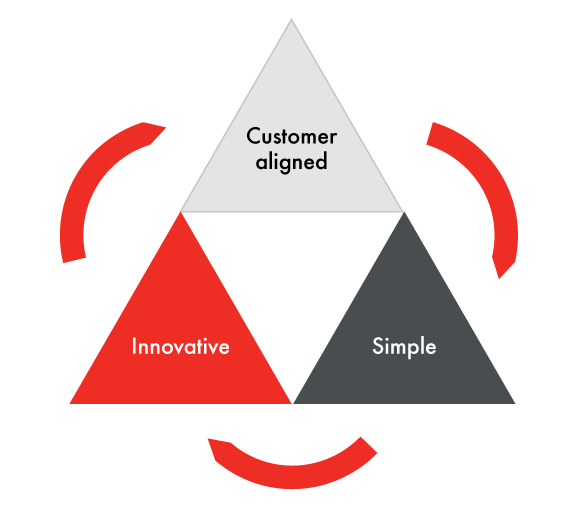
Customer aligned
- Employees know which customer segments we serve and what their top 3 needs are
- Our organisation rallies around these needs (customer facing & support departments)
- We continuously track customer metrics at a transaction, product and business level
- We respond to customer feedback fast
Simple
- We do less, better
- Our customer processes are intuitive
- Our internal processes are as easy as our customer processes
- We routinely identify and eliminate the bottom 30% flow value processes, reporting and meetings
Innovative
- We encourage, empower and reward staff who challenge the status quo
- We launch new ideas fast (< 45 days average)
- We have a full pipeline of ideas linked to incremental volume
- We invest a significant amount annually on innovation
Differentiation for new business growth
Don’t hold your breath waiting for the government to simplify regulation, align their policies with your needs or innovate the country’s way to prosperity. Look at your current structure, reconsider what the business currently offers and determine a positioning that will differentiate you from your competition. Today.
This is just one of the tools UNO uses to ensure when our challenger brand clients invest in marketing, the returns will be worth the effort.
Read More
There are few categories more sophisticated at marketing than fast food. For 50 years McDonalds has been fine-tuning their brand marketing driven machine in Australia. Other brands may talk share of voice or share of wallet, McDonalds is famous for wanting the largest share of stomach in the country.
The business is a great example of how to upsell, cross sell and find new reasons for customers to visit. From breakfast muffins through burgers and happy meals to soft serves and late night treats, washed down by McCafe coffees in between. From Pasta Zu to chicken nuggets to who knows what else a machine can transform animal castoffs into.
Want fries with that?
All of these tactics are an excuse to get more people to buy fries more often, it's where the big profits are made. Makes you wonder how anyone can compete? If you don't work for an omnipotent global business there is evidence of hope. Roy Morgan reasearch released in August 2013 shows just how well new competitors can do by choosing to take a challenger brand positioning.
A case study in how positioning can outsmart the big brands
Hungry Jacks came much later, and has never had the footprint or the ad budget to compete head on. What has worked long term for Jack Cowin's fast food challenger up against a global heavyweight, is a differentiated positioning that gives it a clearly defined space to compete in. "The burgers are better at Hungry Jacks."
From day one they lived up to that positioning statement, better burgers; either with biigger burger patties, actual lettuce instead of a miserable pickled cucumber, to the first Angus beef burger, then bacon and now organic beef. Single mindedly niche focused, and better for it in the minds of customers, who consistently rank Hungry Jacks above Maccas.
Long-term customer satisfaction in fast food comes from smart positioning. Chart: Roy Morgan, August 2013
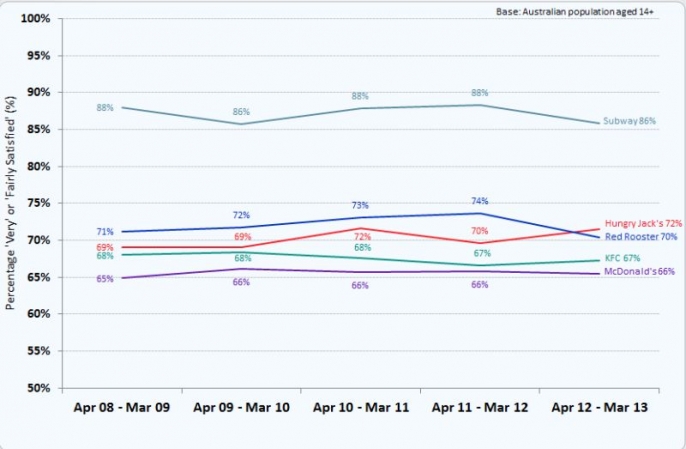
Challenger brands create new terms to compete on
Subway shows the rewards of zigging when the competition zags. While fast food leaders spent their product and promotion strategies on short term price promotion or new themes, from changing with the seasons, think summer pineapple burgers to following fashions, think cajun sauce. Meanwhile Subway went where no fast food had ever successfully gone before: the good for you. positioning.
The chart shows the relative strength of Burger King's "do less of the same, better" approach, and Subway's "do something completely different" model. Both are positively recognised by the consumer and continue to command a price premium to the slower to innovate fast food competition.
What size is a typical marketing budget?

How much is the right amount to invest in marketing?
Depends who you ask. The CMO Council asked hundreds of chief marketing officers around the world across categories how big their budgets are. While this was post GFC, it gives us a useful benchmark when planning ahead.
The starting point for setting a budget uses a top down approach based on your revenue. The chart we've made below shows the percentage of revenue invested in marketing by business to business firms.
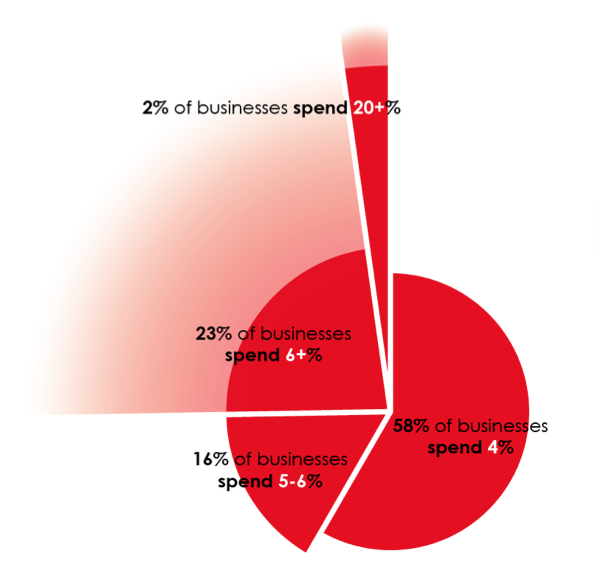
Percentage of revenue invested in B2B marketing
2010 CMO Council Survey
Interestingly, the consensus view amongst those surveyed was that a new brand launch required a minimum investment of 20% of revenue. As we can see from the chart, either there aren't many new brands launched in any year, or the majority aren't spending enough to ensure they don't fail.
Another way of determining the right size of budget is to compare how much is spent according to the size of the business.
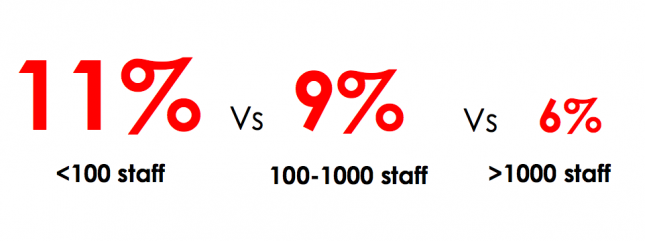
Percentage of revenue invested in marketing by company size
2010 CMO Council Survey
We shouldn't be surprised that as businesses establish themselves and grow, the number of staff grows. As they grow, the relative proportion of their revenue invested in marketing decreases. Marketers understand the long term nature of judging the return on investiment in marketing. Marketing that is consistant delivers compounding returns, a relatively large initial spend will pay dividends in the long term.
Average marketing budget for FMCG brands
A Go-to-Market survey in 2012 found this spread of investment by revenue of FMCG brands:
% of revenue % of companies
No budget 1.1%
0 - 2% 28.6%
3 - 5% 33%
6 - 10% 21.1%
11 - 15% 8.6%
16 - 20% 4.3%
20%+ 3.2%
You can use these percentages as a starting point for framing your marketing budget and then compare to the result of viewing your requirements from a bottom up view.

Bottom up marketing budget approach
Create a list of activities you plan to undertake across your integrated marcomms plan and estimate the required investments for each. Balance and adjust for frequency, reach and coverage. Consider set-up costs for all mediums and a realistic figure for content creation and creative, remembering the better the idea the less times your audience needs to see it to get a result. Factor in research and tracking and an allowance to have the flexibility to react and respond. Remember to allocate around half your total budget for labour, across both internal and outsourced agencies for development and management throughout the year.
Depending on the particular segment your brand is in, the consensus is a B2B marcomms budget needs to be between 3 and 6% of revenue and for FMCG between 6 and 12% to have at least a competitive share of voice.
Read MoreThe most and least trusted professions
Every year Roy Morgan releases a ranking of the trust Australians have for each of the professions. Advertising is down and real estate salesmen up in 2013.
Here are the jobs as they rank for trust in Australia
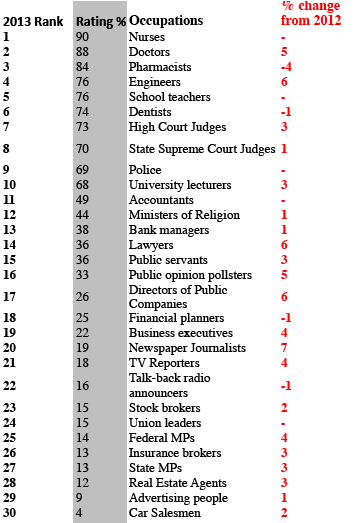
How does this compare on a global basis? See the global trust index.
Read MoreThe Naked truth on Rudd's interview for ads scandal

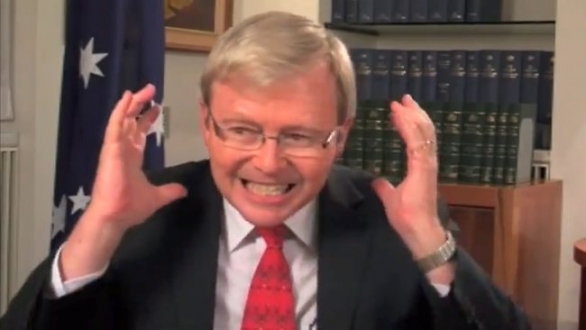
You probably already have an inkling the public rate marketers and ad people at the bottom of the trust scale for professions. You're right, they are down there with politicians. Something happened this week to reinforce the view that neither can be trusted, it's a classic example of an "whatever it takes who cares about the ethics" attitude.
Controversy blew up when Sydney based Naked Communications was exposed while working on a project for Labor when it offered video interviews with PM Kevin Rudd to online youth publishers in return for free online ad space.
Further blurring the lines between “an interview”, and an ad campaign, the agency wrote to Faifax owned The Vine they were “particularly keen for a deeper relationship (including putting investment behind your content on YouTube).”
They also encouraged the online publication to provide “access to pro-Labor or pro-NBN talent.”
When found with their pants down, Naked were fired by Labor. The Sydney Morning Herald’s political reporter, Jonathan Swan, who broke the story, said “it seemed very odd” that Labor was oblivious to the deals offered to online youth sites.
The agency’s CEO claimed no knowledge of the deal, blaming a younger staff member. Indeed, the day after it blew up the agency planner responsible was “no longer in the building”, having left for a holiday in the UK.
What has been adland's reponse to this question of maintaining standards?
Next day the Creative Director of Wonder wrote in AdNews “how much responsibility are we giving young and inexperienced executives? I think too much. Our industry is more impressed by 20-something backward baseball cap-wearing gamers that impress us with their social media savvy than wise old owls. Where are our wise old owls? Nobody could ever accuse the marketing industry as one that eats their young. Quite the opposite, we assassinate the old and we call anyone over 50 old. Mike Wilson (CEO) is Naked’s wise old owl and the bloke is only in his 40s.”
He then suggested the team at Naked vote Abbott to avoid a Labor backlash. This received some wise comments, my favourite from No Wonder of Paddington:
"Wisdom is not the province of age, and this is not an 'odd judgement error'. It's a failure from top down to create a culture of ethics... that at all times forces doing the right thing to trump making a splash for your client. Wilson may be the straight shooter he's characterised here to be, but as the leader of the pack, he's ultimately responsible for the culture that would spawn the actions of that 'rogue executive' who was shown the door"
"This isn't the first time that Naked has been guilty of pushing the envelope at the expense of common sense, and more importantly common decency. What's worse is that the creative drive to market at any expense has had a poisonous influence on the business in general, and in some corners legitimised the art of the stunt and the bad habit of erasing the moral line to such an extent that many of the young guns don't even know it exists."
"It's the agency that should take the fall in the end, not just the employee directly responsible, and encouraging them to vote for Abbott in an attempt to avoid the negative reaction from everyone that they richly deserve shows us all just how jaded the industry at large has become. Sad and sadder."
SMH's Swan labeled the agency “a bit wild west, they’ve got a cowboy reputation” and said they have a history of “doing things a bit off-piste”. Swan also mentioned the infamous fake Facebook Witchery coat campaign which duped both mainstream media and social media users in 2009.
When does online content become advertising?
According to the ACCC and AANA it’s one and the same in the eyes of the law, as we can see from the new Code on marketing communications that encompases social media.
Gabriel McDowell, MD of PR firm Res Publica pointed out the new risks inherent in attempting to leverage digital channels: “From a crisis management perspective, and based on the reported facts so far, I think the ALP has reacted promptly and appropriately to try to limit reputational damage to the Labor brand. They have made it clear they didn’t sanction the offending proposal and firing the responsible agency was a justifiable response given the seriousness of its misjudgement.
"And there can be no doubt that it is a whopper of a misjudgement because building trust and understanding between a brand and its public is the fundamental objective of any communication campaign and deliberately blurring the lines between editorial and advertising can only erode trust when it is uncovered.”
"It has never happened before. My mouth was on the ground. Young people are politically engaged and this is not the way to go about appealing to them. It is why we tend to shy away from the major parties."
She told AdNews it was "exactly the sort of thing that is killing media", but that brands generally grasped the value of editorial over paid content.
The challenge for the communications industry is while we may have self-regulation, only a handful of agencies are Accredited by the Communications Council. UNO is, Naked isn't and most clients don't appreciate the difference. As I commented to AdNews, "what's the point of having an agency Accreditation scheme when people arrive at work having forgotten to pack the moral compass. If we want to be regarded higher than real estate salesmen, which the latest research shows we don't, both clients and agencies need to keep briefs away from the irresponsible."
Will digital spell the end of editorial integrity?
This has all happened less than a week after Adnews editor-in-chief Paul McIntyre expressed a fear for the future of publishing as the title becomes a defacto re-publisher of PR releases and sponsored events. This is what he said in an open editorial:
"Change can be painful but equally stimulating. Just as long the industry knows where it’s all headed and in what direction it is pushing its industry media. It won’t be too far away, for example, when you all can hack back your budget for PR operatives. And PR types, brace for a much harder slog. Seriously, most of you won’t be needed. The deluge of PR-generated ideas and story angles is rising rapidly while the ability for business-to-business media to cover it is declining at the same pace. Don’t forget that. Okay, sorry, rant over."
Read MoreTen biggest threats to business
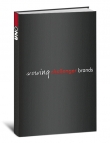
A global survey has given us a picture of what exactly the biggest challenges are for business managers today. Across categories and regions the message is the same – there are half a dozen particular issues companies are feeling pressured by, but don’t know how to deal with.
Those clever marketers at Ernst & Young have come up with a catchy way of showing what we’re all facing – they call it the Risk Heat Map.

Businesses of every size are facing the same big problems. Fortunately current research shows how your business can turn this time of rapid change to your advantage.
The real insight for business owners in this picture is that while managers recognise these risks, as we look across the Y axis we realise most don’t know how to deal with them. These challenges are the consequence of a new paradigm. There’s an elephant in the boardroom – it’s right there in the middle, emerging technologies. Yes, it’s the Internet.
Drivers of business change
The Internet has changed everything. For the first time in the history of commerce, we now have true globalisation thanks to the transparency the Internet gives customers. People can now find the truth about any product or service in just a few clicks, in the privacy of their home or using a smart phone on the shop floor.
In the recent past there was still an advantage in being big – a manufacturer could configure a product and control its availability by region, a retailer could price a product depending on the suburb. Today with instant transparency, a customer can pick and choose from what’s on offer anywhere in the world.
Brands can no longer rely on any competitive advantage from tradition, size or resources. Rather, as Boston Consulting says – “in a world of change, the spoils go to the nimble”. The key to success is not just recognising the drivers of change, it’s ACTING on them.
The biggest risk to any business today is inaction. UNO has a proven formula for growing challenger brands. We can help you start today, risk free.
Email gm@unomarcomms.com for an outline of our process.
Read MoreWhat is beauty in commercial art?

“We have a duty to keep ads beautiful” said Craig Davis, co-chairman and chief creative officer with Publicis Mojo Australia and New Zealand in Campaign Asia, yesterday.
I respect Craig, we pitched against each other for The Rocks account decades ago when we were young and radical and creative directors of competing boutique Sydney agencies. I won. The next year I pitched against him again, for Sydney Water. He won.
Personally I don’t think advertising is art. It’s Commercial art, capital C. The latest CEO survey published in the same magazine reports 80% of the region’s CEOs think marketing people “are in La-La Land”.
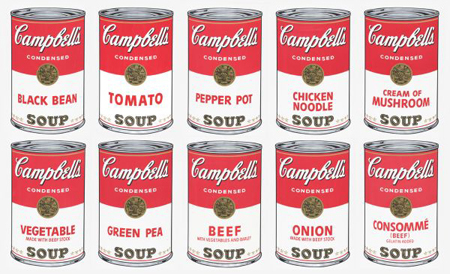
Craig’s musings on beauty in advertising aren’t going to change those perceptions. He is concerned “talent, craft and significance of ideas are being pushed aside by the desire to save time and money.” Craig makes a point worth taking the time to consider – we have all seen examples of the office junior being asked to whip up an ad because they know how to use clip art and can have it done in no time. Or the manager’s nephew is good with computers so he can build the corporate website for less.
All of this is being driven by the changes enabled by the Internet, “the flip side of the new digital meritocracy is that there’s an inordinate amount of noise generated” observes Craig.
He reminds admen “clients pay us to deliver results.” Hear, hear I say.
Then he returns to his point that “at its best, advertising is beautiful, but in the absence of creativity, it is just pollution. In the words of John Keats: Beauty is truth, truth beauty—that is all ye know on earth, and all ye need to know.”
Advertising that works is advertising that delivers a ROI
Business owners are more inclined to see beauty in numbers, like low cost per lead, and high rates of conversion. The fine balance of marketing communications is understanding how to use creativity to commercial advantage.
There is undeniable beauty in identifying a genuine human truth and expressing it to an audience in a way they find appealing. But let’s not talk about beauty for its own sake, lets talk about craft. Both in the craft of storytelling and execution, for business sake.
A century ago Dadaists like Marcel Duchamp challenged the protectors of traditional painting with the question “What is art?”
Before you invest in advertising, social media marketing or any program to grow your business, ask yourself, is this commercial art for the 21st Century? Is the execution well enough crafted to connect with your audience and leave the desired impression? Most importantly, will it give you the best return on investment?
It’s a commercial decision after all, not a beauty contest, don’t you think?
Why CEOs like Facebook yet fear it

The 2012 IBM global CEO study is just out. It once again confirms management is often aware of what needs to change, yet fear acting on their knowledge.
"CEOs need social media, but many fear it" – IBM
The world’s CEOs believe that in the next five years social media will push past websites, call centres and channel partners to become the No. 2 way to engage customers (after face-to-face communications).
However fear of change is preventing most from actually actioning a Facebook strategy. Many will miss capitalising on this inevitable trend to more agile competitors. Some fears are justified, there is no doubt there is risk involved with social media. Risk isn’t just bad ideas like CommBank’s terrorist Olympics viral video.
Advertisers are now liable for users' Facebook comments

Australia's digital industry is up in arms about a ruling from the ad watchdog, which determined a brand's Facebook page is an ad platform with all its material - including user-generated content - liable under the AANA code.
A recent ruling from the Advertising Standards Bureau (ASB) in a complaint against Diageo said it considered Facebook to be a marketing communication tool. The decision changes the landscape of social media advertising with brands liable for content generated by consumers.
In its ruling, the ASB wrote: “The Board considered that the Facebook site of an advertiser is a marketing communication tool over which the advertiser has a reasonable degree of control and could be considered to draw the attention of a segment of the public to a product in a manner calculated to promote or oppose directly or indirectly that product."
Social media advertising regulations and marketing your business
“The Code applies to the content generated by the advertisers as well as material or comments posted by users or friends.”
This is yet another example of how our regulatory frameworks are anachronistic in the era of the Internet. This new world of social media is merely a decade old, yet regulators like ASB are employing codes written in the steam age when ads were only mass distributed by printing press. Publishers had control of what letters to the editor were published with an eye on libel. But the pace of public postings on Facebook makes such a process for an editor of a business Facebook page less that of a publisher, more one of the town crier who invites people to the town square but can’t predict what the crowd will yell about loudest.
Right now the judiciary has similarly lacked an ability to adapt as the public circumvents contempt of court rules and out accused on Facebook, passing collective judgement before a trial. No blurred pictures of the accused’s face like in the press or on TV. Think the Kings Cross king hitter, perhaps fuelled by Diageo products. Lets see a post on a liquor brand’s Facebook about the next alcohol induced murder and ponder the consequences. It's going to happen, irrespective of what the ASB stipulates.
So if CEOs are going to increasingly use Facebook for a dialogue with prospects, we will need to be extremely diligent to keep on the right side of the law, irrespective of how sensible we think regulations are today.
Learn from Darrell Lea's Rocky Road

Darrell Lea's new Perth concept store opened in March. Too late to keep the administrators from the door?
Most business leaders know the 4 Ps from marketing 101. As Darrell Lea’s predicament shows, in today’s marketplace where change is underway at an increasingly blistering pace, keeping those easily understood basics working in your favour is becoming increasingly difficult. Here they are one by one:
Product
Mega trends like multiculturalism, gourmetisation of food products, better for you choices, and social issues like fair trade today shape what we choose to eat.
In the past it was enough to make minor adjustments to products and expect a sales lift simply by placing a NEW IMPROVED flash on the wrapping. For the last couple of decades there’s been little in the way of product innovation at Darrel Lea. As well intentioned as they may have been, small line extensions like fruit flavoured liquorice haven’t been enough to stop the sales decline.
Businesses have to be wary of who they entrust to give them independent counsel. Darrell Lea invested in research that resulted in a new tag line, “85 years of creating sweet magic”. One can argue this simply reinforced a backward looking management mindset.
Today customers are rewarding brave leaps forward in categories. As Max Brenner’s website proclaims, “Chocolate is not just about taste” it’s also about fashion. From Mexican spicy chocolate and hot chocolate shots to chocolate soufflés and Tiramisu, Australians are spending more money on chocolate than ever before as brands can come up with new adventurous ways to tempt them.

Challenger brands aren’t just new companies doing new things, old companies doing things differently are also being rewarded. Australia’s oldest chocolate maker/retailer, 97 year old family business Haigh’s has kept customers coming back and continues to entice new ones with adventurous new takes on chocolates.
Promotion
Cutting back on advertising for a short term cost saving is proven to come at a long term significant loss. Once a significant investor in advertising, Darrell Lea has been absent from mass media marketing for several years. It takes many years to build a brand and nanoseconds to damage one in social media. It pays to treat advertising as a compounding investment that pays an annuity in return.
Price
Too often price is only mentioned in the same sentence as promotion. It is in fact a two way lever. A 4 for $15 offer on Rocklea Road isn’t going to entice a new customer, it simply reduces the margin on a sale to an existing one.

Whereas Lindt, once considered a niche special occasion brand, has grown by offering a variety of chocolate balls across a range of pricepoints and product sizes that still maintain a premium.
Place
The Internet is making everyone reconsider where is the best place to make a sale? Ecommerce may not be right for a product that will melt in the mail, but is owning a shop the best alternative? Why own 63 shops when most chocolate sales are through Coles and Woolworths and convenience stores?
If you are going to have a retail outlet, it needs to have a good reason to justify the high overheads. Darrell Lea’s average over the counter sale is around $11 per customer. You’d need a lot of footfall to justify the rental on the King and George Street Sydney store. On the opposite corners are the eye candy Apple store and Louis Vuitton, where the products cost thousands (and are never discounted).
Challenger brands understand stores are the new 3D interactive ad medium. They are all about theatre and entertainment. Max Brenner has the theatre of their liquid chocolate Willy Wonka-esque stores.
Other retailers realise the store is simply the best way to gather new customers details for database driven online sales. The objective of the shop front is to entice prospects in and the brief to staff is to start a long-term relationship. For instance, banks lose money on physical branches, but haven’t found a better way to gain new customers. Citibank’s new branches in Hong Kong have been designed by the same architects as the Apple Stores. You can’t make a deposit at one of these new gleaming white banks with couches and interactive screens, you can have an espresso made by a barrista who is briefed to cross sell financial products to you.
How to stay competitive
Many market leaders are vulnerable to the threat that comes from failing to re-look at their entire business models. Simply reviewing the 4 Ps from the perspective of traditional wisdom will no longer ensure a business stays competitive. Market leaders that fail to embrace change, not just across product and service but entire systems and relationships, are increasingly less profitable than smaller challenger brands. There are a number of proven tools and techniques to help businesses rapidly adapt and trial new ways, feel free to ask us about some of them.
Boston Consulting has formally identified what savvy marketers know is the driver of business growth today:
In a world of change, the spoils go to the nimble*
*Martin Reeves and Mike Deimler, Boston Consulting Group,
Harvard Business Review July-August 2011

Founded in Adelaide by Alfred E Haigh in 1915, Australia’s oldest family-owned chocolate maker/retailer has a history of embracing change.
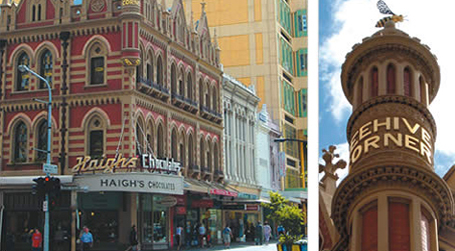
In the 1950s grandson John learned from Swiss masters Lindt and Sprungli and introduced European fine chocolate making to Australians. The current fourth generation Haigh family management preside over a business that represents barely 1% of Australia’s chocolate sales. Yet I would venture to say they are very profitable.
By continuing to innovate Haigh's continues to prosper as a challenger brand
Their award-winning Australian Collection was launched in 2003, with six native food centres including quandong, macadamia nut and honey, lemon myrtle and wattle seed. And as Australian’s have become more sophisticated in food tastes, Haigh’s have kept up with such adventurous chocolates as a South Australian truffle duet made with premium wines from the State’s wine regions.
Haigh’s environmental policies and sponsorships are just one indicator of how in touch this old business is with today’s consumer.
Last August at the Family Business Australia Conference, Joint Managing Director Alister Haigh told me they were ready for the next big change - online sales. The only sticking point is developing a delivery method that can guarantee the integrity of their heat sensitive product.
Following the biggest fine in UK finance history, it’s timely to look again at Barclays’ Big Ad

Barclays agreed to pay a record $442 million fine for rigging the London interbank offered rate last month. The scandal has cost the jobs of Barclays CEO Robert Diamond (below), Chairman Marcus Agius, and Chief Operating Officer Jerry Del Missier.
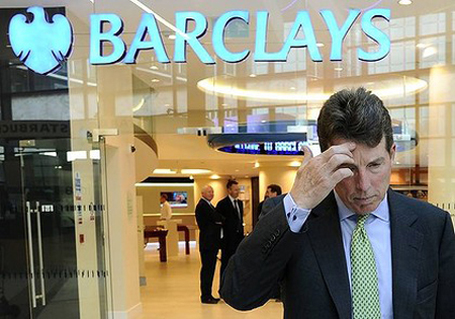
It pays to consider the future consequences of a single-minded marketing tagline. For Barclays, “We’re Big” just doesn’t cut it anymore.
If you're a marketer, Read This Or Die...

A friend sent me a YouTube link via Facebook – a comedy sketch by Bill Hicks, where the comedian asks anyone in the audience that’s in advertising or marketing to “kill yourself".
I was reminded of my profession’s tenuous grip on social acceptance when this week leading researchers Roy Morgan released their latest annual survey of how Australians rate the professions: ad people are still near the bottom, just above car salesman.
There is still hope for Admen and marketers – it’s about having conversations at the board level that explain in understandable terms how we can add value. This week McKinsey Quarterly published a checklist of 5 things that will help business managers get the best ROI from their marketing.
So for those who rate the wisdom of McKinsey's consultants, here in my words are the 5 tips that will make any CEO take you seriously.
1. What exactly influences our consumers today?
Mass media marketing to the masses is oh so yesterday. Thanks to the Internet, shoppers now consider options at more times in more ways, from reading online reviews to comparing prices when in-store using their mobiles. Once someone has bought something, they potentially become a reviewer themselves.
So how do you get into the new consumer's head? You can use anything from traditional research to online polls or social media tracking to get a better understanding of what consumers are now thinking about a category. The key is to be open minded about what you learn and have a management team willing to let go of accepted wisdoms.
2. How well informed (really) is our marketing judgment?
It was only a decade ago when traditional advertising was all that mattered. Marketers who new their stuff could make decisions safe in the knowledge what always worked in the past probably would tomorrow. And planned accordingly. Today you have to be able to recognise signals of change, and act on them. This means managers have to move out of their comfort zones and hypothesise, test new ways, then measure, analyse and adapt. Again and again. In McKinsey’s words there has always been a a need to define a “clear relationship between marketing spending and business results”. Today it has shifted from “should we be spending on marketing at all?” to “what’s the optimum marketing spending needed to hit our targets?”
3. How are we managing financial risk in our marketing plans?
Successful marketing communication takes hitting the right audience with the right message at the right time. The difference today is the targets are increasingly individuals and they are moving faster than ever. Traditional mass media allows advertisers to minimise risk by using metrics based on years of surveys that measure frequency and impact of a particular medium. Not so now. With today’s new media “influence can shift rapidly, and there is little accumulated experience about which messages work, when marketers should apply them, how they can be scaled, or even whom they influence”.
Measurement and risk reduction today comes from a closer relationship between sales and marketing and the channel. One of our clients has found scan data has new meaning now it can be overlaid with pre and post campaign brand tracking and the incredible analytics available using Shopperpedia.
4. How are we coping with added complexity in the marketing
organisation?
If you think it’s hard to keep up now, it’s only going to get harder faster. McKinsey's unsurprisingly suggest “you’ll require a number of specialists. You can’t get the skills and knowledge you need in just one person, and you’re not likely to get everything you need internally”.
5. What metrics should we track given our (imperfect) options?
At this point McKinsey goes into a whole grab bag of consultant speak. At UNO we think it best to get back to business basics – success should be measured by profit, not volume of sales or market rank. A business is successful when it can compete on more things than just price. And it knows it’s a real challenger brand when staff and partners are aligned and customers are referrers.
Now if you’re in advertising or marketing and you can’t get your head around the idea you have to change to survive, take a couple of minutes to laugh out loud as Bill Hicks encourages you to kill yourself
Where the smart budgets are being spent...Social Media
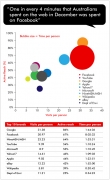
Have you noticed over the last decade that just about anything that isn’t nailed down has been digitised. Today we can access nearly everything from anywhere on anything – from getting the news on a tablet, trading shares on a mobile or accessing software services from the cloud. Plumbers are relatively safe, but most other businesses have to change.
The difficulty for business managers though is not just deciding how to make the change to digital, but how to make money out of it...
Pew Research Centre in the United States found that digitisation is burning money
Newspapers lost $10 in print ad revenue last year for every $1 they gained online. Just five companies, none of which existed a couple of decades ago are now taking 68% of online ad revenue: Google, Microsoft, Yahoo, AOL and Facebook.
Marketers know that they need to integrate traditional mediums with digital. Few businesses actually do – and some still think online is primarily for brands with young customers.
Businesses may be surprised to discover that the place where Australians spend the most time online, is also the most popular with women 25-45 years old.

The papers continue to spend money on journalists and creating the content, while these new companies continue to grow their revenue off the papers’ labours. Now because of their growing databases, fuelled by an understanding of people’s behaviour and preferences gathered from social media use, the digital intermediaries can now target ads more precisely than the old publishers.
The things we can now do on Facebook are incredible. In the past only advertisers who could afford to buy expensive data and research could precisely target their consumers. Now any advertiser can pretty well plan as effectively as the global giants by tapping into the growing wealth of intelligence of the social media technologists.
The Pew report says: “Two trends in the last year overlap and reinforce the sense that the gap between the news and technology industries is widening. First, the explosion of new mobile platforms and social media channels represents another layer of technology with which news organisations must keep pace. Second, in the last year a small number of technology giants began rapidly moving to consolidate their power by becoming makers of 'everything' in our digital lives. Google, Amazon, Facebook, Apple and a few others are manoeuvring to make the hardware people use, the operating systems that run those devices, the browsers on which people navigate, the e-mail services on which they communicate, the social networks on which they share and the web platforms on which they shop and play. And all of this will provide these companies with detailed personal data about each consumer.”
Business journalist Leon Gettler points out “Newspaper groups like Fairfax are the canaries in the coal mine for other industries facing similar challenges, from book shops and publishing to health care, industries where barriers to entry are low and where information is the main product. The trend to digitisation will accelerate with 'Generation C', people born from 1990 on who expect to be constantly connected through every possible device now entering the workforce, and with costs of computing and technology equipment dropping.”
“In every organisation, from media to retailers like David Jones, Myer and Harvey Norman, the biggest challenge always comes down to the tension between those who advocate a more aggressive approach and those aligned with legacy traditions, those who want to go fast and those who want to slow down.”
Adaptability: the new competitive advantage
As the pace of change accelerates, adaptability becomes the new competitive advantage. Long established leaders like Kodak, Borders and Fletcher Jones are a lesson in what management can expect if they don’t change their business model to integrate digitised marketing with their traditional methods.
Sources: Leon Gettler, Business Spectator, 28/3/12
Pew Research Centre, How Newspapers Are Faring Trying to Build Digital Revenue, 5/3/12
Why are marketers using Smartphones today?

The answer is in the numbers, and is a pointer to the next big thing.
Google researched 300,000 people around the world to find out their Smartphone use. Now as Australian marketers we can compare and contrast markets.
Number 2 for Smartphones in the world
Australia is now ahead of the US, UK, and Japan.
Average Smartphone under 12 months
Most of Australia’s Smartphones were purchased in the last 12months. We’ve gone from the back of the pack to the second highest penetration of this technology in the last year. Every month 1-2% of the entire population of Australia buys a Smartphone.
81% do it at home
More Australians used their Smartphones at home during the past 7 days than out – just 66% use them on the go.
50% like to watch
Almost 1 in 2 use their Smartphone while watching TV, while 1 in 3 use Smartphones and another Internet-enabled device at the same time. Talk about adult ADHD media consumption.
Smartphones are good for business
49% use their Smartphone to research and then call businesses – and 45% visit a business they’ve found using their Smartphone.
Aussies are obsessed with real estate
The stats confirm what we’ve all known from dinner party conversations – 1 in 5 Australians surveyed had looked for an apartment or house with their Smartphone – that’s 33% higher than the US or UK.
40% search daily
2 in 5 of Australian Smartphone owners use mobile search daily, that’s more than the UK or Germany and almost as high as the number who use desktop search daily.
The number of queries about retailers made via mobile devices has jumped 220 per cent year on year, and is now about 25 per cent of all queries.*
App, app and away
Australian survey respondents had 25 apps on average per Smartphone, Vs 23 in the US & UK. We’re not just talking free apps; Australians averaged 8 paid apps per phone.
TV or not TV?…
1 in 5 Aussie Smartphone owners would rather give up their TV than their Smartphone.
Better than sex?
1 in 3 say so according to a Telenav survey, that’s how many would choose their Smartphone rather than sex.

Now you’re up to speed with the omnipresence of mobile you’ll need to start thinking about how you can extend your online activity beyond a website that is viewed on a PC.
But wait, there’s more. Nothing stands still nowadays; to keep up you also need to be thinking of how to stay ahead of the competition.
So what’s next?
In just a year Australians have learnt to surf the web, send emails and watch movies on a Smartphone. Now consumers are moving to tablets because they are more convenient than laptops and obviously have a bigger screen than Smartphones.
1.2 million this year
In 2011 tablets will outsell Smartphones in Australia. 64 million tablets will be sold worldwide by the end of this year. #
73% of them will be iPads
Apple will sell 47 million iPads this year.#
We believe video to mobile devices is a game changing opportunity for challenger brands. Until now many marketers have been held back by the high cost of entry of mass media advertising. The amount of media consumption online has risen from 25 per cent in 2007 to about 42 per cent now. A new buzzword for marketers in the US is ''SoLoMo'' – as in social media, local networks and mobile. Savvy marketers are recognising the need to develop strategies that make the most of these new, powerful mediums. *
We believe you can now punch above your weight more effectively than ever by integrating video and content to create a genuine one-to-one dialogue on customers’ mobile devices. You’ll be surprised what is now possible…
50% conversion rate
50 per cent of people who inquired about a hotel via a mobile device went on to make a booking within a couple of days, compared with 20 per cent for those online via a computer. *
Give me a call on my Smartphone, 0412 982 538, if you’d like to know more.
*Ross McDonald, Google, 9/12/11
#Gartner, 8/12/11
"Greenwashing" Why a great idea that isn't true is a bad idea


What a shame this great ad for Steggles wasn’t for a producer of real free-range eggs. It was pulled because it’s a lie, even though beautifully told. Every person in every agency should be stegglers for detail.
The public deserves better than marketers passing off intensively “farmed” produce as free range when there isn’t room for the animal to scratch itself. “Greenwashing” takes many forms, like adding the claim Hormone Free to chicken packs when it’s been illegal to add hormones to any farmed chicken in this country since 1968.
At the moment here at UNO we are working on a campaign for an Australian innovation, the first plastic to biodegrade in modern landfill, which is where a billion disposable coffee cups end up each year across our country. We have told our client he can succeed as a challenger brand by telling the truth. There will be no green washing, just the facts about what this product can and can’t do. And we’ll do that the way all ad people should, with creative wit and human insight.
J Walter Thompson’s words of over 100 years ago are as right today as ever – “The truth, well told” is why we get up in the morning.
See the vodcast about what makes biorene biodegradable – the Earth eats it up!
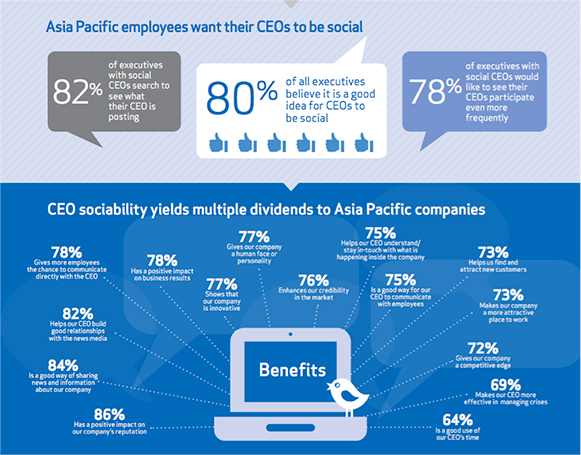
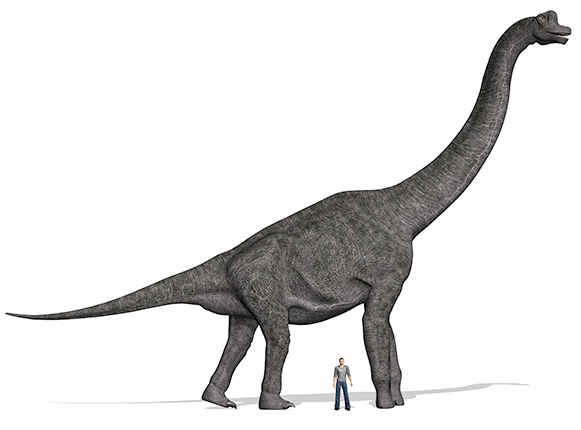
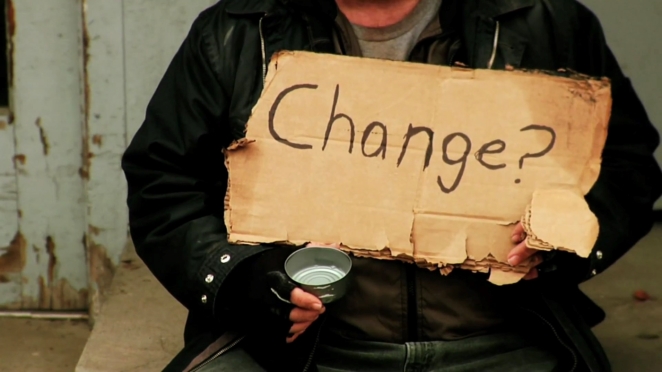





Scan the QR code for our contact details.
Download the Neoreader app.
© COPYRIGHT 2013 UNO marcomms Privacy